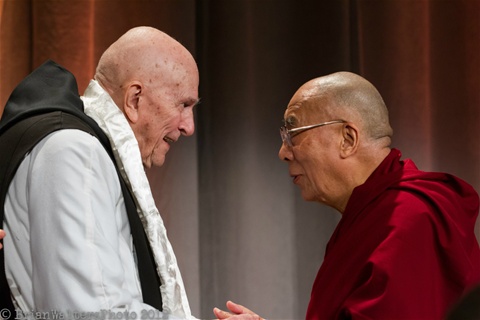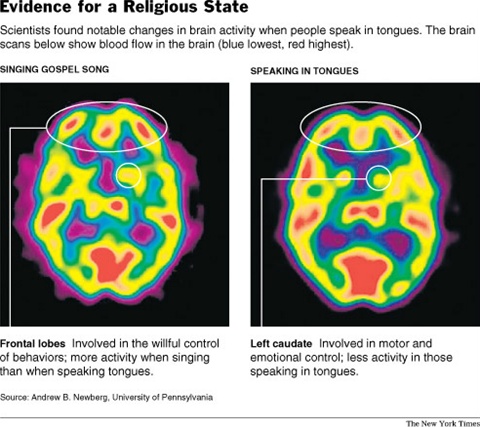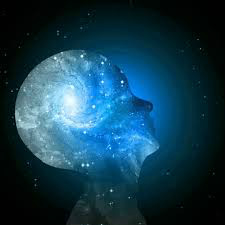R #01 : Easter Meditation’s Fusion With Catholic Contemplation & Its Promotion By Protestantism.
Firstly at Vatican 2, 50 yeras ago on October 28, 1965 : DECLARATION ON THE RELATION OF THE CHURCH TO NON-CHRISTIAN RELIGIONS BY HIS HOLINESS POPE PAUL....
" The Catholic Churchrejects nothing that is true and holy in these religions ……in Hinduism, men contemplate the divine mystery ….in profound meditation or a flight to God with love and trust…… (in Buddhism )…. attain (liberation) , by their own efforts or through higher help, supreme illumination.
Subsequently, Catholic Father Thomas Merton & Zen Master Thich Nhat Han enter In Strange Alliance
Father Thomas Merton the founder of Catholic Contemplative Prayer who sees “no contradiction between Buddhism and Christianity “ and who “ intends to become as good a Buddhist as I can “ said this of zen master n Thich Nhat Hanh : “ Thich Nhat Hanh is more my brother than many who are nearer to me in race and nationality, because he and I see things in exactly the same way” .
On the other hand Thich Nhat Hanh wrote : “ The image of Jesus that is presented to us is usually of Jesus on the cross. This is a very painful image for me. It does not convey joy or peace, and this does not do justice to Jesus.I hope that our Christian friends will also portray Jesus in other ways, like sitting in the lotus position or doing walking meditation. Doing so will allow us to feel peace and joy penetrating into our hearts when we contemplate Jesus. This is my suggestion : Book - Going Home; Jesus and Buddha as Brothers; page 46
Then, Father Thomas Merton & Thomas Keating blends Eastern With Catholic Practices BM # 07 - 10
Father Thomas Keating said :
"Meanwhile, prayer ( Lectio Divina ) itself had become so rigidly dichotomized--discursive meditation, affective prayer, and the multiplication of devout aspirations--that the inherent tendency of Lectio Divina to move toward contemplation had been lost.
I was aware that the method of Lectio Divina in most instances was not doing the job of bringing people, even cloistered monks and nuns, to the contemplative states of prayer that St. Teresa describes in her writings ***
In the wave of spiritual reawakening that the Second Vatican Council seems to have touched off, young people were going to India by the thousands from all over the world in search of spiritual teachers.
This was during the time of the first wave of the renewal of religious life after the Second Vatican Council,….
We invited several spiritual teachers from the Eastern religions as well as some ecumenically skilled Catholic theologians to visit and speak with us. Fr. Thomas Merton was still alive at this time and writing extensively about his researches and exchanges in interreligious dialogue. He was one of the most articulate pioneers from the Christian side in the dialogue among the world religions.
….we entertained a Zen master…. For nine years after that, he held sesshins once or twice a year
We also were exposed to the Hindu tradition through Transcendental Meditation.
Could we put the Christian tradition into a form that would be accessible to people in the active ministry today and to young people who have been instructed in an Eastern technique and might be inspired to return to their Christian roots if they knew there was something similar in the Christian tradition? "
Father Thomas Keating tells us "how to become God" in 3 steps of his Centering Prayer. https://www.youtube.com/watch?v=HQQ6v-Vgcuk
An online book called ‘Kundalini Energy and Christian Spirituality‘ A Pathway to Growth and Healing by Philip St Romain has a forward written by Father Thomas Keating where he says “ Reading the Christian mystics from the perspective of his own experience of kundalini energy, the author sees many examples of its working in the lives of Christian saints and mystics. Since this energy is also at work today in numerous persons who are devoting themselves to contemplative prayer, this book is an important contribution to the renewal of the Christian contemplative tradition. It will be a great consolation to those who have experienced physical symptoms arising from the awakening of kundalini in the course of their spiritual journey, even if they have not experienced it to the full extent described by the author. His compelling testimony is a powerful affirmation of the potential of every human being for higher states of consciousness.”
Now ...Leading Protestants Promote Catholic Contemplation
Leading Protestant Richard Foster quotes Thomas Merton on 9 separate occasions in his book “ Celebration Of Discipline “. http://www.inplainsite.org/html/richard_foster_and_renovare.html
LightHouseTrailsResearchProject( LTRP ) is an excellent resource for tracing other leading Protestants like Dallas Willard, Brian McClaren, Leonard Sweet, Sue Monk Kidd, etc who are promoters of Contemplative Christianity. http://www.lighthousetrailsresearch.com/blog/?tag=renovare
http://www.lighthousetrailsresearch.com/blog/?p=8359&pfstyle=wp LTRP provides a list of 100 top Contelplative Evangelical Christian leaders.
LTRP provides a list of Contemplative colleges http://www.lighthousetrailsresearch.com/Colleges.htm
Living Journey’s website reports on Father Thomas Keating and Kundalini :
https://livingjourney.wordpress.com/category/renovare/page/7/
The fact is, this is a movement that has found its insidious way into God’s house by the likes of certain men. One man who I am concentrating this post on is Father Thomas Keating who has had major influence on the ‘Emerging Church’. This man is in bed with many well known so called Christian teachers, and I use that term loosly. He has even gone so far as admitting that ‘Centering/Comtemplative/lectio Divina Prayer is the same as ‘Kundalini or Serpent Prayer’. Yep…. you heard me right. Christians are encouraged to do Kundalini to awaken the coiled serpent.
I have found an online book called ‘Kundalini Energy and Christian Spirituality‘ A Pathway to Growth and Healing by Philip St Romain. In that book there is a forward written by Father Thomas Keating where he says the following: This book is the first description that I know of in Christian literature about the awakening of kundalini energy in a purely Christian context. Kundalini has long been known in Taoist, Hindu, and Buddhist spirituality. The fact that this complete awakening occurred in the context of a classical development of Christian prayer makes it an important contribution to East/West dialogue. Given the newness of the kundalini experience in Christian circles, however, any theological interpretation is bound to be tentative.
Reading the Christian mystics from the perspective of his own experience of kundalini energy, the author sees many examples of its working in the lives of Christian saints and mystics. Since this energy is also at work today in numerous persons who are devoting themselves to contemplative prayer, this book is an important contribution to the renewal of the Christian contemplative tradition. It will be a great consolation to those who have experienced physical symptoms arising from the awakening of kundalini in the course of their spiritual journey, even if they have not experienced it to the full extent described by the author. His compelling testimony is a powerful affirmation of the potential of every human being for higher states of consciousness.
Kundalini is an enormous energy for good, but like all human potentials, it could also be used for selfish motives and thus become a source of serious harm. This is probably the energy that is so attractive in cult leaders; they may well impart a spiritual experience through the transmission of kundalini in a way that we do not yet understand.Energy, however great, is only energy. It is how one uses it that counts. Thus the importance of the moral context in which kundalini is awakened. Most spiritual disciplines worldwide insist on some kind of serious discipline before techniques of awakening kundalini are communicated. In Christian tradition, the exercise of the moral virtues that quiet emotional turmoil, the service of others, and the regular practice of the stages of Christian prayer from discursive meditation to contemplation are the essential disciplines. Without such positive preparation and the passive purifications described by St. John of the Cross, kundalini could serve the purposes of the false self and be used for spiritual power plays, to the great emotional and spiritual damage of other people. Thus, for a Christian at least, it is essential that their energy be directed by the Holy Spirit. In Christian spirituality, the unfolding of the stages of prayer described by St. Teresa of Avila in the Interior Castle may be the fruit of the kundalini energy arising under the guidance of the Holy Spirit. Kundalini may also be an active ingredient in the Dark Nights of St. John of the Cross.
Site Comment : It is too obvious as to what is happening here. Of all people, why would Pope Francis hold up the "contemplative style" of Father Thomas Merton to US Conggress in Sept 2015 ? Read more Archive A # 03
R #02 - Speaking in tongues ( Pentecostal/Charismatic Christianity ) turns frontal lobe down.
Dr Andrew Newberg : " The next slide is going to be the same person, now speaking in tongues.
If you look in the frontal lobe area, where the arrows are pointing, as I toggle back and forth, you can see there's a lot less activity in the frontal lobes when the person is speaking in tongues.
So when they started to speak in tongues, and we see this in all the people we studied, their frontal lobe activity goes down" .
Andrew Newburg @ Pew Research
Site Comments : Is it rational to think that the frontal lobe wherein resides the will, differentiating right from wrong, mediation ( making peace ), love, altruism, should shut down when used in the worship of God ? Remember, hypnosis is associated with low frontal lobe activity when one is more open to receiving "suggestions". See S #07 S #08 - #10
R #03 Neural Phenomena Of Non-Dual Nirvana, Awakening, Universal Consciousness, etc when all polar opposites including good and evil cease from being discerned.
All meditative practices derived from the east, incorporate various ways of emptying the mind. The ways may be mantras ( included now are those with Christian words ! ), following ones breath, a riddle ( what is the sound of one hand clapping ??), mindfulness, etc, all of which are accompanied with a myriad of neural phenomena ( calming of amygdala, alpha/theta sleep waves, endogenous dopamine causing addiction and visualization, activation of temporal causing out-of-body sensation ) and the most significant of which is that the “emptying “ process in screening of all incoming information from the frontal lobe causes the parietal lobe to go offline. The parietal lobe gives you your position in 3-dimensional space and also gives you a sense of your body-boundary. All these are lost when the parietal also goes off-line and the phenomena is the experience of “universalism” when you are indivisibly one with the universe and the universe is one with you.
Eastern philosophy finds its “reality” in this neural phenomena. This euphoric experience in combination with some of the other neural phenomena described above are given names like nirvana, awakening, cosmic consciousness, satori and lately Christian contemplatives call it being in the presence of God or intimacy with God.
Non-dual was the “awakened” experience of Buddha in meditation. His eyes were opened, all polar opposites suddenly vanished. Initially, Buddha was deeply troubled by endless rounds of life and death, reincarnation, his karma ( deeds of good & evil ) , etc, but suddenly in meditation he experienced the euphoria, the disappearance of all polar opposites, he experienced the “liberty” that there was no” life and no death”, “no good and no evil”, “no heaven and no hell” and “no God and no Satan” and consequently he was freed from karma ( because in that mind-state he could not discern good/evil ) and similarly he was liberated from the need for further reincarnation as that same mind-state could not discern life/death.
Read S #04 Click: S #01- 07 and also full article in my blog Achive A #01



Latest comments
Hi there, I am interested in becoming a certified meditation instructor/coach, what would you say is the best in order for me to receive these credentials. Christ centered of course. Thanks.
Hello "m". Please do send me an e-mail. If my e-mail address is not attached to this reply, you can see my e-mail address on this webpage:
https://awa7.org/about-awa-contact-us
Would like to contact Will Baron about Feldenkrais, Rolfing, applied kinesiology comparisons. If you have any free material on mysticism, I would like for the research group to send them to me. Thanks
Hi. Where are you going after Portland? Coming to Southern California? I will watch your 3 talks in Portland in sequence. Thanks.